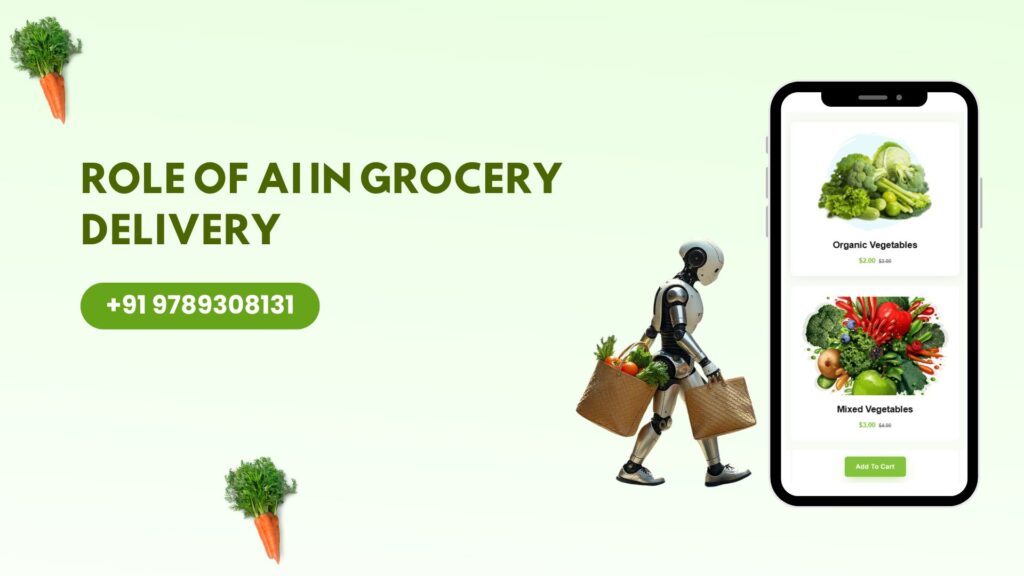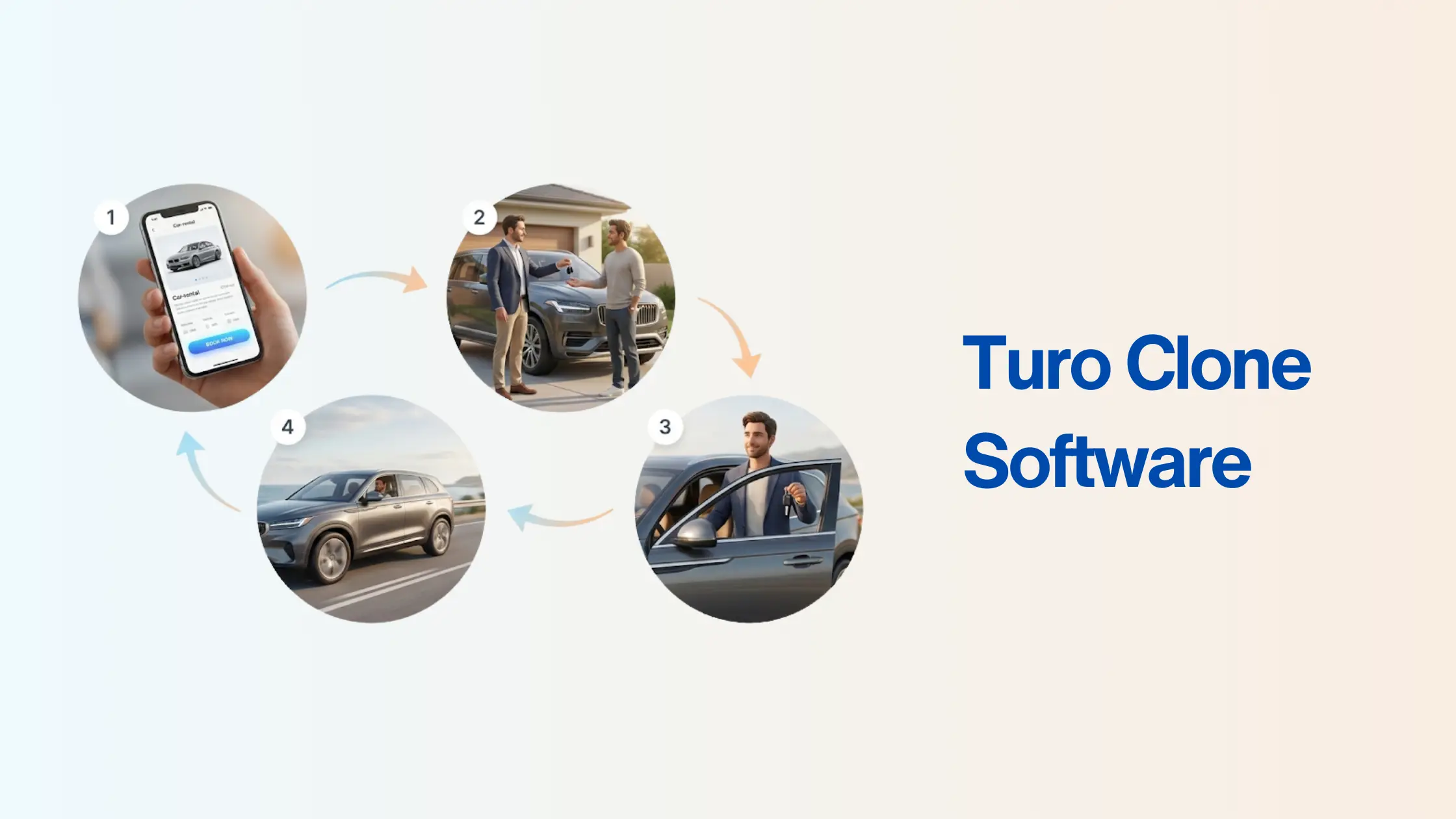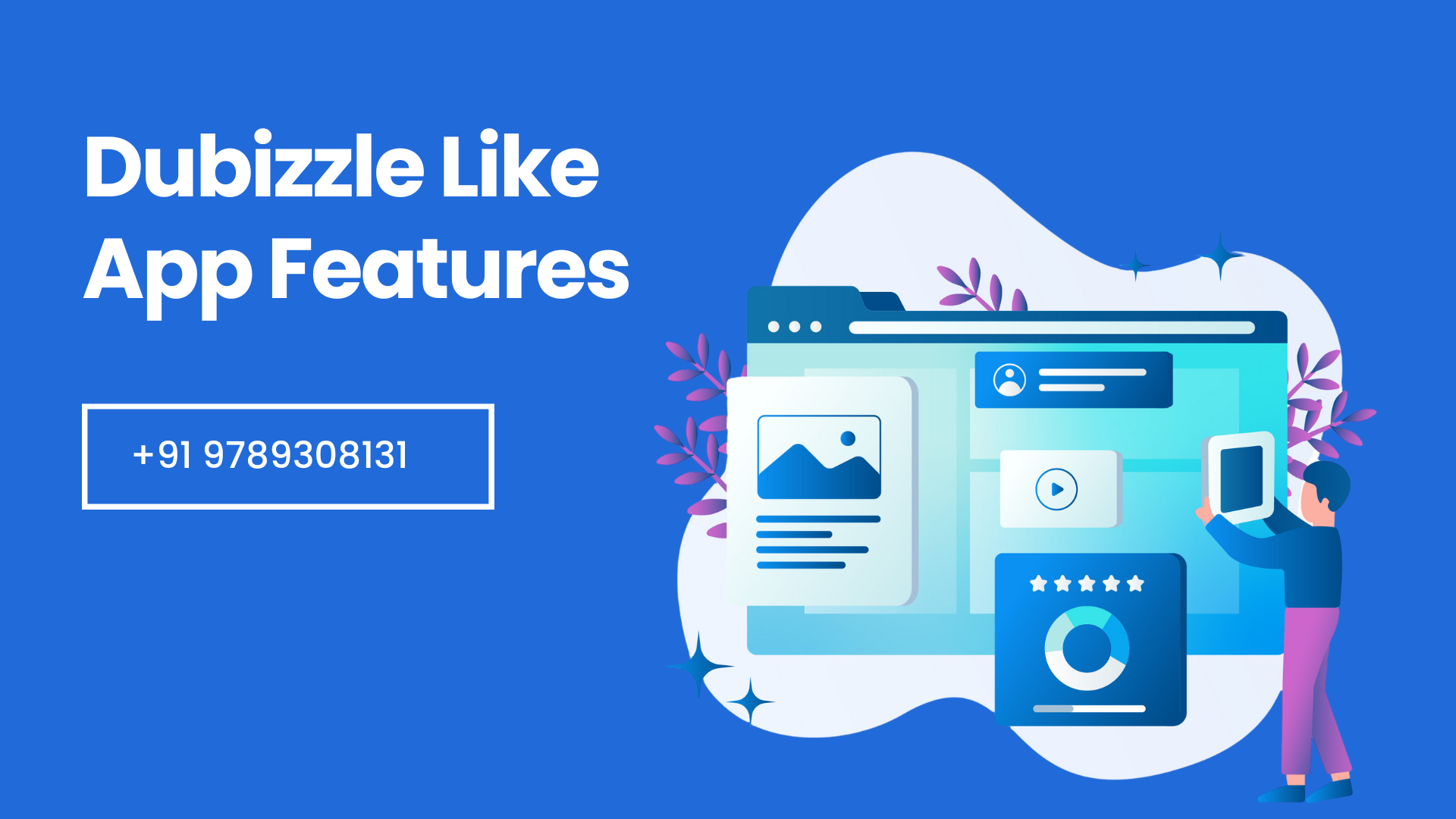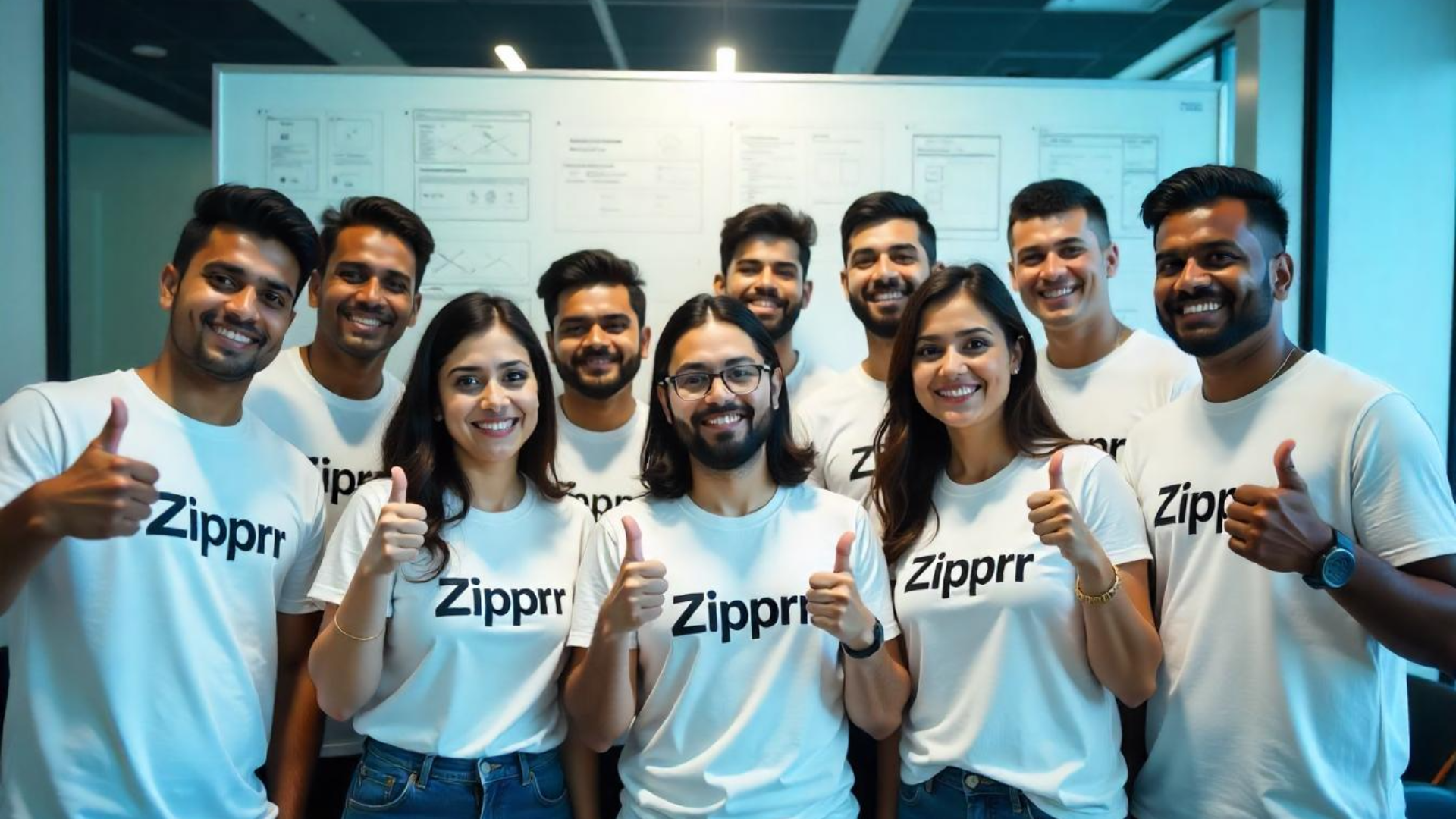The grocery delivery industry is undergoing a massive transformation, driven by artificial intelligence (AI). With the global online grocery market projected to reach $6.59 trillion by 2033 (CAGR: 28.09%), businesses are rapidly adopting AI-powered solutions to enhance efficiency, reduce costs, and improve customer satisfaction.
AI is no longer a futuristic concept—it’s a necessity for grocery delivery apps looking to stay competitive. From personalized recommendations to automated route optimization, AI is reshaping how consumers shop for groceries and how businesses manage operations.
What Is a Grocery Delivery Application?
A grocery delivery app is a digital platform that lets users order groceries online for doorstep delivery. These apps include essential features like product catalogs, secure payments, real-time order tracking, and AI-driven recommendations. By leveraging AI, they enhance functionality—predicting user preferences, optimizing delivery routes, and automating inventory management for a seamless shopping experience.
AI transforms these apps from simple ordering tools into smart, efficient systems. They personalize suggestions, reduce delivery times, and minimize operational costs, making grocery shopping faster and more convenient for users while boosting efficiency for businesses.
Advantages of Integrating AI in Grocery Delivery Apps
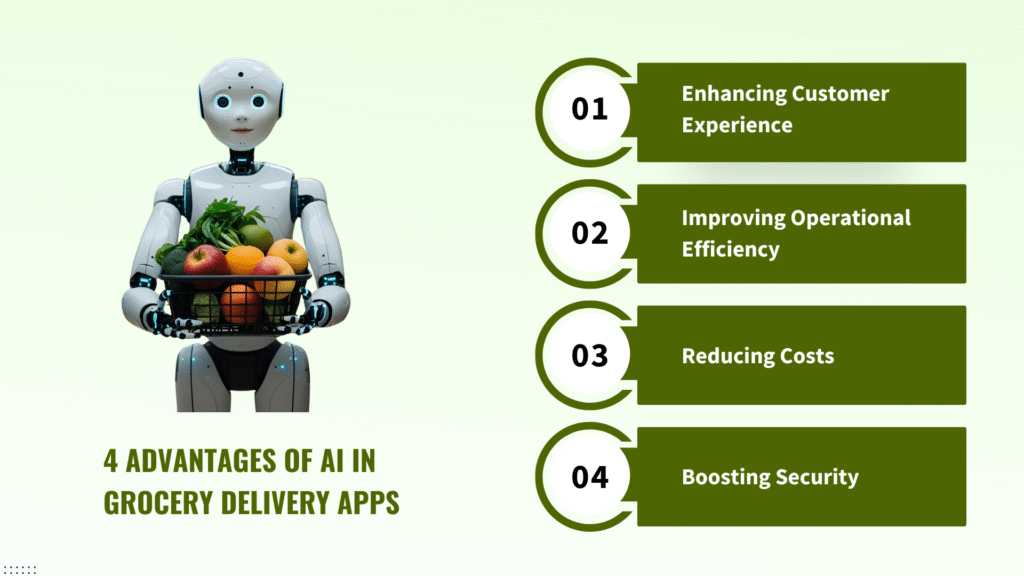
AI is revolutionizing grocery delivery by:
Enhancing Customer Experience
Personalized product suggestions increase engagement.
AI chatbots provide instant customer support.
Improving Operational Efficiency
AI predicts demand, reducing food waste.
Automated warehouses speed up order fulfillment.
Reducing Costs
Optimized delivery routes cut fuel expenses.
Dynamic pricing maximizes revenue.
Boosting Security
AI detects fraudulent transactions in real time.
How AI Optimizes Grocery Delivery Apps: Key Use Cases
AI-Driven Personalization & Recommendations
How It Works:
AI analyzes a customer’s purchase history, browsing behavior, and preferences to suggest relevant products.
Example:
If a user frequently buys pasta, the AI may recommend pasta sauce, cheese, or garlic bread.
Impact:
Increases average order value (AOV) by 10-30%.
81% of grocers focus on personalization, yet 92% of shoppers feel their experience lacks it—AI bridges this gap.
AI in Inventory & Demand Forecasting
How It Works:
AI uses historical sales data, seasonal trends, and external factors (holidays, weather) to predict demand.
Example:
Before Thanksgiving, AI anticipates higher demand for turkey, cranberry sauce, and pie ingredients, ensuring optimal stock levels.
Impact:
Reduces food waste by 20-30%.
Prevents stockouts and overstocking.
AI-Powered Delivery Route Optimization
How It Works:
AI considers traffic, weather, delivery locations, and driver availability to determine the fastest routes.
Case Study: Instacart
Uses AI to assign orders dynamically.
Reduces delivery time by 15-20%.
Impact:
Lowers fuel costs.
Improves on-time delivery rates.
AI Chatbots & Customer Support
How It Works:
AI-powered chatbots handle order tracking, refunds, and FAQs 24/7.
Example:
A customer asks, “Where is my order?” The chatbot instantly provides real-time updates.
Impact:
Reduces customer service workload by 40%.
Enhances user satisfaction.
Dynamic Pricing & Promotions
How It Works:
AI adjusts prices based on demand, competitor pricing, and customer behavior.
Example:
Surge pricing during peak hours.
Discounts on slow-moving inventory.
Impact:
Increases profit margins by 5-10%.
Fraud Detection & Security
How It Works:
AI monitors transactions for unusual patterns (e.g., bulk orders from multiple locations).
Impact:
Prevents fraudulent transactions.
Protects both businesses and customers.
Challenges in Implementing AI for Grocery Delivery
While AI transforms grocery delivery with personalized experiences and operational efficiencies, businesses face significant implementation hurdles:
High Costs
Developing and integrating AI requires substantial investment in models, infrastructure, and maintenance
Smaller retailers may struggle with upfront expenses
Data Privacy Concerns
AI systems process sensitive customer data
Must comply with strict regulations (GDPR, CCPA)
Requires robust security measures to maintain trust
Ongoing Maintenance Needs
Machine learning models need continuous updates
Requires dedicated resources and expertise
Outdated models lead to poor recommendations
Legacy System Integration
Many retailers use older software platforms
AI integration can be complex and disruptive
May require complete system overhauls
Customer Adoption Barriers
Some shoppers prefer traditional methods
Requires education about AI benefits
Need to demonstrate clear value proposition
Case Studies: How Leading Brands Use AI in Grocery Delivery
1. Instacart – AI for Smarter Deliveries
Instacart uses AI to optimize order assignments and delivery routes. Its algorithms analyze real-time traffic, shopper availability, and delivery locations to assign orders efficiently. This reduces delivery times by 15-20% while cutting operational costs. Instacart also employs AI for personalized recommendations, increasing average order value.
2. Ocado – AI-Powered Robotic Warehouses
UK-based Ocado operates fully automated fulfillment centers using AI and robotics. Machines pick and pack groceries with 99% accuracy, drastically reducing human labor and errors. AI also predicts demand, ensuring optimal stock levels and minimizing waste. This system allows Ocado to process millions of orders efficiently, setting a benchmark for grocery automation.
3. Amazon Fresh – Dynamic Pricing & Demand Forecasting
Amazon Fresh leverages AI for real-time price adjustments based on demand, competitor pricing, and inventory levels. Its AI-driven demand forecasting ensures shelves are always stocked, reducing spoilage. Additionally, AI-powered voice shopping via Alexa simplifies reordering, enhancing customer convenience.
Why Choose a Ready-Made AI-Powered Grocery App?
Building a custom AI grocery app is expensive and time-consuming. Instead, businesses can opt for Zipprr’s ready-made solutions:
Standard Package ($490)
Basic features (ordering, payments, tracking).
Pro Package ($890)
Advanced AI (personalization, route optimization).
Benefits:
✔ Faster launch (weeks vs. months).
✔ Cost-effective (no high development costs).
✔ Scalable (grow as your business expands).
Conclusion
AI is no longer the future of grocery delivery—it’s the present. Leading companies are already leveraging AI to transform operations, from smart route optimization and demand forecasting to personalized recommendations and fraud detection. By automating processes and enhancing efficiency, AI delivers faster service, reduces costs, and improves customer satisfaction. For grocery businesses, adopting AI isn’t just an advantage—it’s becoming essential to stay competitive in this rapidly evolving market.


